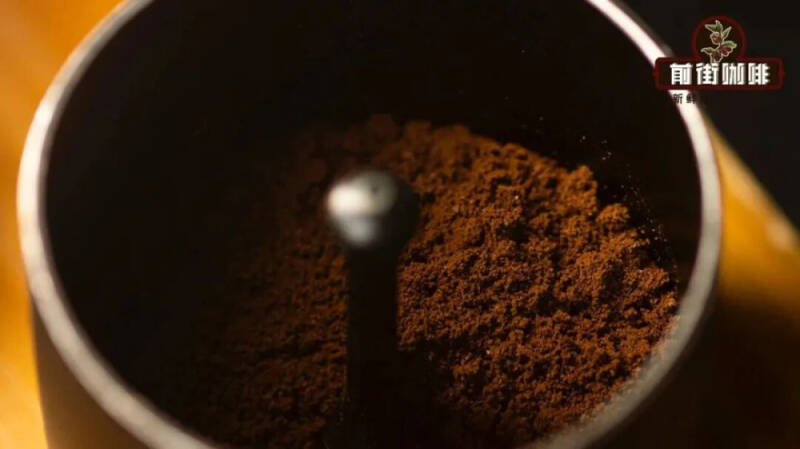Why does the coffee maker throw out the first cup of espresso? How to clean a preheated espresso machine?
I don't know if you have ever seen this kind of picture. The barista just started the machine in the morning, but he didn't drink the first concentrated extract. Instead, he poured it into the sewer "ruthlessly" and continued to extract another handful of coffee. When a customer sees it, he will ask why? Do you have to do this if you make your own coffee at home?
Why was the first cup of concentrate thrown away?
Take the habits of Qianjie stores for example. Before officially producing them, we need to enter the essential coffee debugging process, which includes two tasks. First extract a cup of concentrate and dump it directly, then taste the concentrate (black coffee) and adjust the flavor of the latte to determine the parameters of the day, which is related to whether the coffee produced throughout the day is delicious or not. The reason why the first cup of condensed water could not escape the fate of being thrown away was because it was "unqualified."
Residues of cleaning powder
Generally speaking, espresso machines in coffee shops are not cheap. As long as they are maintained and maintained in place, their service life is relatively long, and daily cleaning is one of the key factors in extending the life of the equipment. After closing every day, the barista will carry out a relatively deep cleaning of the coffee machine. In addition to wiping the stains, he will also use a special cleaning powder to remove residual dirt in the brewing head.
Although most of these powders will be dissolved or thrown away with the washing of hot water, it cannot be ruled out that there are still traces of cleaning powder remaining in the gaps of the brewing head. Therefore, in order to avoid the impact of these particles on the taste of coffee, it is also for health reasons. The first concentration after starting the machine is usually poured out directly.
Overnight coffee powder
Compared with other grinding equipment, the Italian bean grinder has a longer internal channel, which makes it easier to leave the last handful of coffee powder in it overnight. As Qianjie often emphasizes, once coffee beans are ground into powder, both the aroma and carbon dioxide gas will double and dissipate over time. By the next day, this part of the coffee powder not only lacks the aroma, but also affects the final flow rate due to the removal of carbon dioxide., then the Italian concentrate produced will have little reference value.

The parameters of the coffee machine are unstable
We all know that water temperature and pressure are important parameters for extracting Italian concentration. After the barista turns on the machine, these two values can reach the set standard in about ten to twenty minutes. However, in fact, parameters such as water temperature and pressure have not stabilized at the beginning of the machine, and the coffee made at this time often has insufficient extraction or over-extraction. For example, the actual water temperature is too low, resulting in the concentrated taste and thin aroma. After a complete extraction process, the coffee machine can be officially turned on.
For the above reasons, the barista chose to dump the first concentrated after turning on the machine, more to make the coffee produced daily in the store taste better and more stable. But for home coffee users, the situation needs to be different.
Is it necessary to throw out the first handful of concentrated products in home production?
You should know that most home users who own espresso machines may only make 1 to 2 cups of coffee a day due to their small number of cups. Therefore, they will not adjust the grinding frequently, and they will not conduct deep cleaning as frequently as coffee shops. In this case, it is undoubtedly "extremely wasteful" to grind a handful of powder to make concentration after starting the machine, and then dump it away, and most people are reluctant to do so. So for family coffee players, Front Street's view is:
1. Some friends are accustomed to weighing coffee beans first and then grinding them as much as they use. The biggest advantage of this method is that it is not easy for residual powder to accumulate, so there is no need to put powder in; For friends who have placed coffee beans in the bean warehouse for a long time, the part of the overnight coffee powder remaining in the channel has changed, thus affecting the taste of the first cup of coffee. Qianjie still recommends abandoning it, that is, grinding it to a weight of 5 - 8g before picking up the powder and throwing it away.
2. If cleaning powder was not used the day before, there is naturally no need to specially use a cup of concentrate to "rinse" it; but if we have already deeply cleaned the coffee machine, then we can also be clever and use less powder.(For example, 12g~15g), fill it tightly and make a concentration to "force" the powder hidden in the gaps in the brewing head.
3. After the coffee maker reaches the preset temperature, don't rush to make it first, wait another 5 to 10 minutes for the internal temperature to fully rise. Then, we directly fasten the handle on the brewing head, empty the hot water for about 6 to 8 seconds, and repeat it 4 to 5 times, so that the machine can be fully warmed up.
- END -
Important Notice :
前街咖啡 FrontStreet Coffee has moved to new addredd:
FrontStreet Coffee Address: 315,Donghua East Road,GuangZhou
Tel:020 38364473
- Prev

Is coconut water good for making coffee? How to make coffee by hand with coconut milk? Coconut green American practice
The world of coffee has never lacked innovation. We often see tricks on different raw materials. For example, the same combination of coconut + coffee can be divided and combined into various different shapes. There are coconut water + concentrated coconut green American style, There are thick coconut milk + concentrated raw coconut latte, and there are also coconut + cold extract iced special drinks... In short
- Next

Does it taste better to make cold extract coffee with room temperature water or warm water? Why is cold extract coffee low in acidity?
As one of the representatives of iced coffee, cold extraction is usually made with room temperature water (about 20 - 30℃). However, due to low extraction efficiency, it is necessary to soak for a long time to obtain more flavor substances to highlight the sweetness and richness of the coffee. Experienced friends all know that making a pot (cup) of cold extract is quick
Related
- Starbucks employees in 10 countries will hold protests in support of the US strike!
- Some people are happy and others are sad! Lucky wants to fully launch ovens?!
- Stop business for rectification! Jasmine milk white clerk deliberately did not pack and let the rider wait!
- Ridiculous! Tims pressured the federal government to relax the entry of foreign workers?!
- How to judge the brewing method by the state of the powder bed? How to break out of a deep hole with hand-brewed coffee?
- Detailed explanation of the proportion of gold gouache in hand-brewed coffee? What are the Gold Cup Guidelines?
- What is the difference between the gold label rose summer and the red label rose summer in Guixia Village? Are Rose Summer 1931 and Gori Rose Summer?
- Cudi stores ban other brands of coffee?! Netizen: No problem
- Is it better to make coffee cold or hot? Why is it recommended to drink hot coffee?
- Lucky people collapsed! The store ceiling is full of AI surveillance cameras?!

